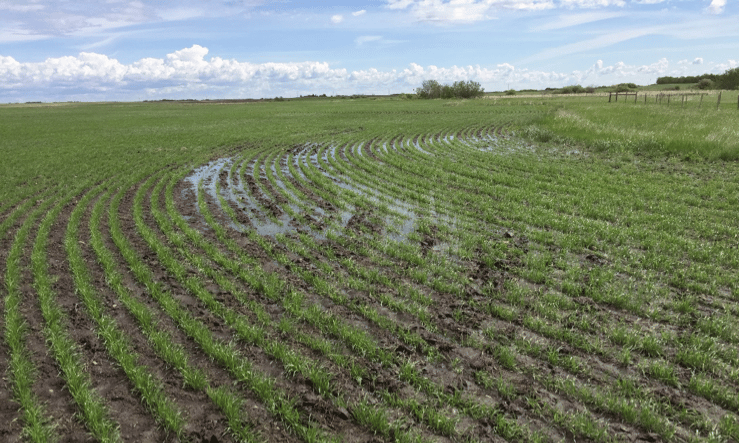Benefits of SWAT MAPS: Achieving Target Plant Populations
Every year there is more and more focus on calculating seeding rates properly based on target population, TKW, and gemination %. An even (and correct) plant population has benefits of even crop maturity, weed competition, and even fungicide effectiveness. But even after calculating seeding rates, have you noticed that you still have areas that are thin? Or maybe even seem too thick? This is natural to see across a landscape since germination and seedling mortality are affected by soil moisture, texture, temperature, seedbed condition, seed depth and in some cases fertilizer in the seedrow. These are all things related to soil, water, and topography – the foundation of a SWAT MAP.
Hills and knolls are always drier than lower landscape positions and as a result often have lower germination due to seed stranded in dry soil. This has been a very common occurrence in 2019. Cutworms and wireworms also tend to be more prevalent on these landscape positions. While its ok to have a slightly lower population on a dry hill due to lack of available water, every crop has a low population threshold before yield potential is lost. For example, this is likely around 18 plants/ft2 for spring wheat in most environments, or 3 plants/ft2 for canola.
Non-saline depressions also have challenges – but these are usually too much moisture, poor seedbed conditions, cold soil, or excess trash that results in higher mortality, especially when seeded early. Because these areas tend to have good soil with lots of nutrition and available water, the crop will tend to tiller or branch out more, causing later maturity than the rest of the field. By increasing the seeding rate in these areas we can help reduce excessive tillering in cereals or branching in canola, and “force” the crop to quicker maturity to some degree. The goal isn’t necessarily to have a higher population than the mid-slopes, but to at least not have lessplants – which is often the case if seed is applied at a flat rate. The other benefit to more even maturity is timing of fungicide, especially if controlling FHB in wheat where the application window is small. The fungicides actually work pretty well – it’s the timing of application on a field scale that is the challenge, and if heads haven’t come out on late tillers, the disease won’t be controlled.

Saline depressions have their own unique challenges – mostly the high salts that affect osmotic potential but also weed control issues that come as a result of poor crop establishment. Salts in the soil prevent seeds from imbibing water to germinate properly which always lowers the plant population in these areas. Some areas may not grow much of anything if they are saline enough, and in this case the best strategy might be to cut back on seed and fertilizer completely. But in slight to moderate salinity, a common approach is to increase the seeding rate to get more plants established, use up soil water, and compete with weeds (growing importance with increasing herbicide resistance in kochia). The strategy taken is dependent on crop tolerance, seed cost, and degree of salinity – which is measured by soil test EC. On a SWAT MAP, the severely saline areas are delineated from the slightly saline or non-saline areas by the SWAT BOX EC data, and put into separate management zones; the most saline zone always being zone 10.
In summary, achieving ideal plant populations can have multiple benefits including yield, disease control, earlier harvest timing, and weed control. SWAT MAPS combined with the ability to VR seed is a handy tool that can effectively manage this common crop variability factor.
Wes Anderson, PAg
Senior Fertility Specialist - Croptimistic Technology Inc.
wes@croprecords.com









